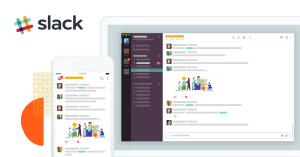A Q&A session with Lynn Foster, RT3 Member and Director of Operations for AccuLynx.
By Kate Foster.
New technology is continuing to shape the roofing industry, but it can be difficult for contractors to evaluate and implement the right solutions for their business.
There are many options to consider, but specifically for small to medium roofing companies, AccuLynx Director of Operations, Lynn Foster, believes growth can be achieved by focusing on mobile applications and software integrations.
Mobile Applications:
From cell phones, to tablets, to e-readers, there really is an app for everything.
Of course, the next place they are taking over is the business world, and that includes the roofing industry. The ability to work out of the office or while on a job-site saves companies time and money as well as providing flexibility for both employees and customers.
What are some apps that roofers should be using the field?
Roofers should be using the apps that help them do their job more efficiently. CRM mobile apps (like AccuLynx), aerial measurements, tracking expenses, time clocks, PDF scanners, notes, call recording – all of these individually can make contractors more productive.
How do CRM’s with mobile applications like AccuLynx help roofing businesses?
Roofers no longer need to rely on their paper files to get access the information they need. They don’t even need to carry around a laptop. Having shared access to all of your estimates, aerial measurements, material orders, contracts, warranties – all in one place – means you’re never digging for the information you need.
When your business information can be transferred instantaneously from device to device, person to person, you eliminate down-time and ensure that you’re never working off of outdated information.
What is a real-life example?
Let’s say you’re on the job, and a homeowner has a question about a change order they placed. But, you don’t have the paper copy with you. While this may have once caused a problem, necessitating someone to go to the office and pick up a copy, it is no problem when you have mobile access to your office. Being able to access all of the documentation associated with a job right from your phone gives roofers the ability to answer homeowner questions, check material delivery schedules, find insurance information – everything, right at your fingertips.
Software Integrations:
The other upcoming technology trend for the roofing industry is software integration. Now that many roofing technology companies, such as AccuLynx, SkyMeasure, EagleView, and SalesRabbit have emerged and found their footing, they have begun to partner to create platforms that fulfill all your roofing needs. Just like a toolbox, these partnerships combine countless uses, from organizing your information and directly ordering supplies to taking aerial measurements and improving your sales techniques, into to one easy to use kit.
Aside from having all of your tools in one spot, the biggest benefit of integration is the efficiency it creates. When all of the companies you use are integrated, you can electronically share information between them, eliminating the need to re-enter information into each different platform. Automated processes also help you cut down on errors because information gets directly transferred from one application to another. Not only does this improve your accuracy, but it also saves you the time you would have wasted locating and fixing the mistakes.
What are the challenges roofers are facing when it comes to technology?
One of the greatest challenges regarding technology in the roofing industry is getting people to convert. Many people, especially those in the older generation, are wary of making the switch. They claim that the pen and paper methods they have used for years work fine. However, these are the people who will start to get passed by as the competition adopts new technology that makes them more efficient, and ultimately, more profitable.
How can roofers start to adopt technology?
If you are still concerned about the transition to technology, it can help to start out small. Decide what you want the technology to do for you, whether it be organize your files, enable you to make direct orders from suppliers, or manage your business more efficiently, and start with that. Once you get used to that part, you can start adding in more and more. This way, it will not seem as overwhelming as it would if you did it all at once.
Any more advice?
It is important to make sure you are committed – only embracing limits the potential that technology can give you. Partially committing won’t result in the benefits you are hoping for and can only do so much in helping you stay ahead of the competition. Fully committing is sure to skyrocket you to success and profit.
Staying ahead the competition is a priority for any roofing business. Who doesn’t want to be the best at what they do and reap the profits from it? Right now, that means taking advantage of technology. With the flexibility, savings in time and money, and the boost in efficiency that technology provides, it would be difficult to not rise above everyone else.
Source: AccuLynx

